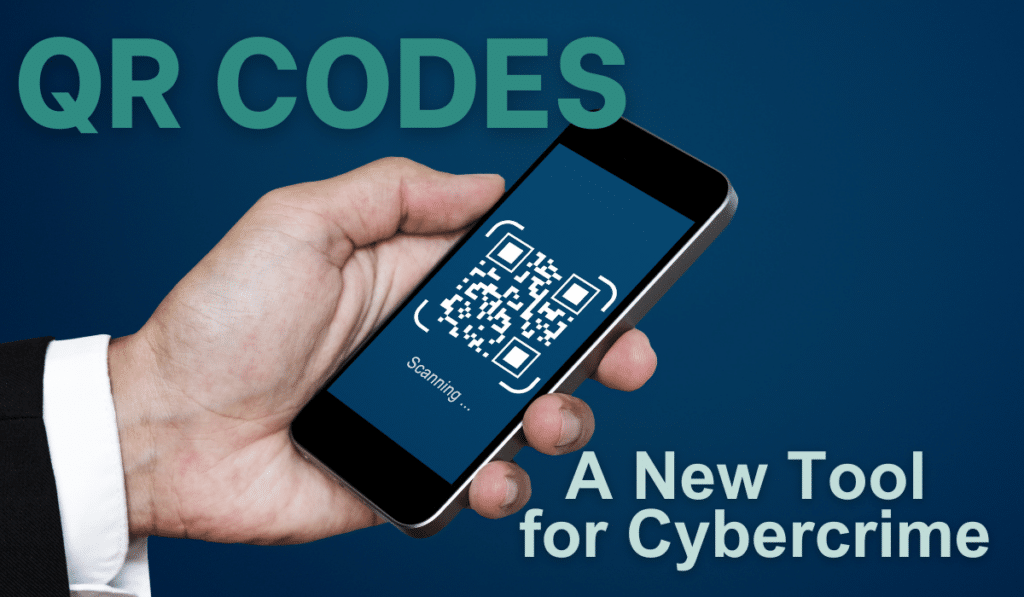QR Codes. The versatile little black and white squares that we see everywhere. Advertising materials to event tickets, restaurant menus, and even on product packaging. While they undoubtedly offer convenience and efficiency, cybercriminals have also recognized the potential of QR codes as a tool for information theft and hacking. Let’s look at the methods used by cybercriminals to exploit QR codes and then explore ways to protect ourselves from falling victim to their malicious tactics.
Understanding QR Code Scanning Mechanism
QR codes are designed to be scanned quickly and effortlessly by smartphones. They lead users to a particular website, app, or content. A quick snap with your phone’s camera, and you’re directed to the encoded destination. And now cybercriminals are using it to redirect users to malicious sites or perform other nefarious actions.
QR Code Hijacking
One of the primary methods used by cybercriminals is QR code hijacking. This technique involves placing malicious QR codes on legitimate advertising materials or in public spaces. Unsuspecting users who scan these codes are taken to phishing websites, where sensitive information such as login credentials, personal data, or financial details can be stolen.
Malware Delivery
Another alarming tactic is malware delivery through QR codes. Cybercriminals embed malware into the QR code’s destination website or app. When users scan the code, they unknowingly download and install the malware onto their devices. This malware can then grant unauthorized access to sensitive data or track the user’s online activities.
Fake Wi-Fi Networks
Cybercriminals have also been known to utilize QR codes to set up rogue Wi-Fi networks. They print QR codes with malicious network information and place them in public spaces, making it appear as if it’s an official and trustworthy network. When users connect to these rogue networks, hackers can intercept data transmitted over the connection.
Protecting Yourself from QR Code Exploitation
While the potential risks of QR code exploitation exist, with the right precautions, you can safeguard yourself from falling victim to cybercriminals. Here are some practical tips to help you stay protected:
1. Be Cautious: Treat QR codes with the same caution as you would with any unknown link or URL. Only scan QR codes from trusted sources or those provided by reputable companies.
2. Use a QR Scanner with Security Features: Choose a QR code scanner app that has built-in security features. Some scanners can check the destination URL for potential threats before opening the link.
3. Examine the URL: Before scanning a QR code, take a closer look at the URL that will be opened. Ensure it matches the company or organization it claims to be affiliated with.
4. Enable Two-Factor Authentication (2FA): Whenever possible, enable 2FA for your online accounts. This adds an extra layer of security and makes it more difficult for cybercriminals to gain unauthorized access.
5. Update Your Device: Keep your smartphone’s operating system and apps up to date. Manufacturers regularly release security patches that can protect your device from known vulnerabilities.
6. Avoid Public Wi-Fi Networks: Be cautious when connecting to public Wi-Fi networks. Whenever possible, use a virtual private network (VPN) to encrypt your data and protect it from prying eyes.
QR codes undoubtedly offer a convenient way to access information and services quickly. However, cybercriminals are constantly seeking ways to exploit technology for their benefit. Stay vigilant and use precautions and you can reduce the risk of falling victim to QR code-related attacks. Remember, being cautious and informed is your best defense against modern cyber threats. Stay safe, and happy scanning!
The post QR Codes: A New Tool for Cybercrime appeared first on Breach Secure Now!.





